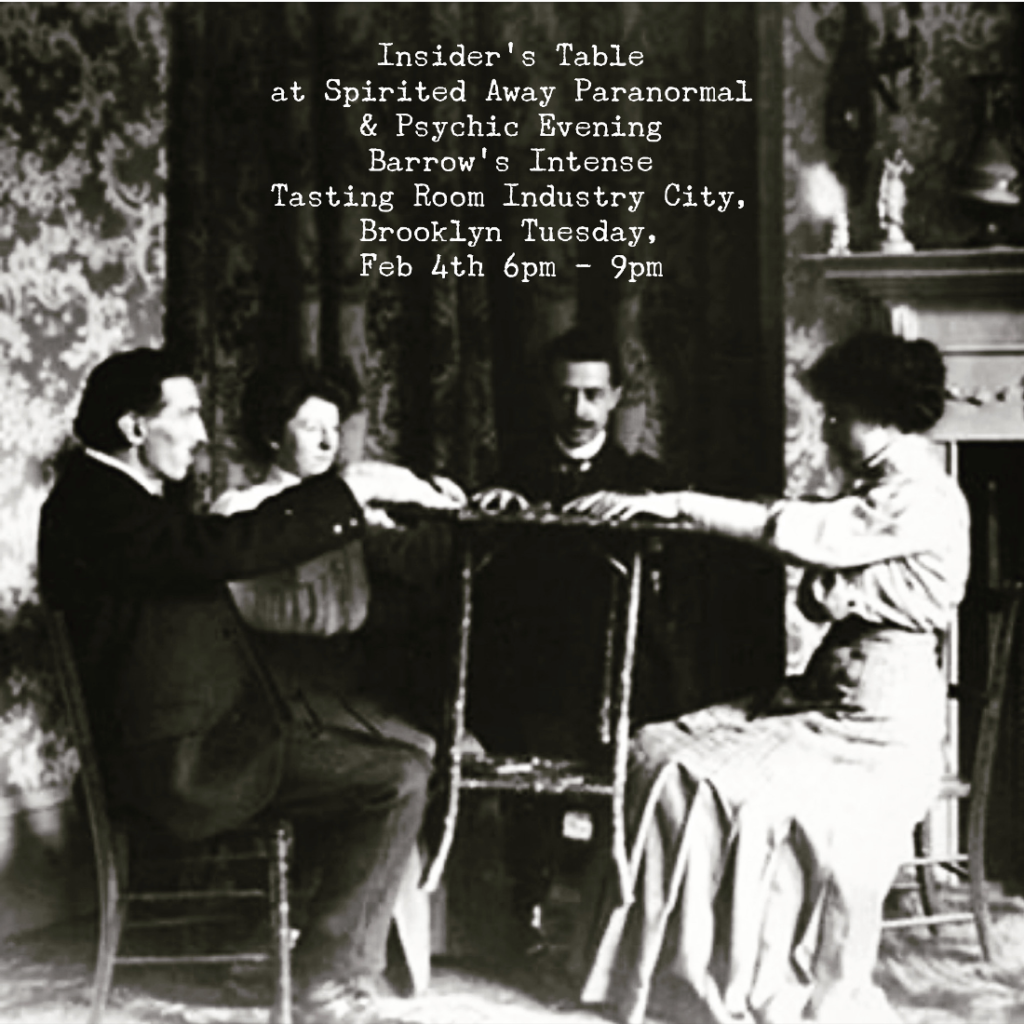
Reserve a tarot reading at the ‘Spirited Away Paranormal & Psychic Evening’

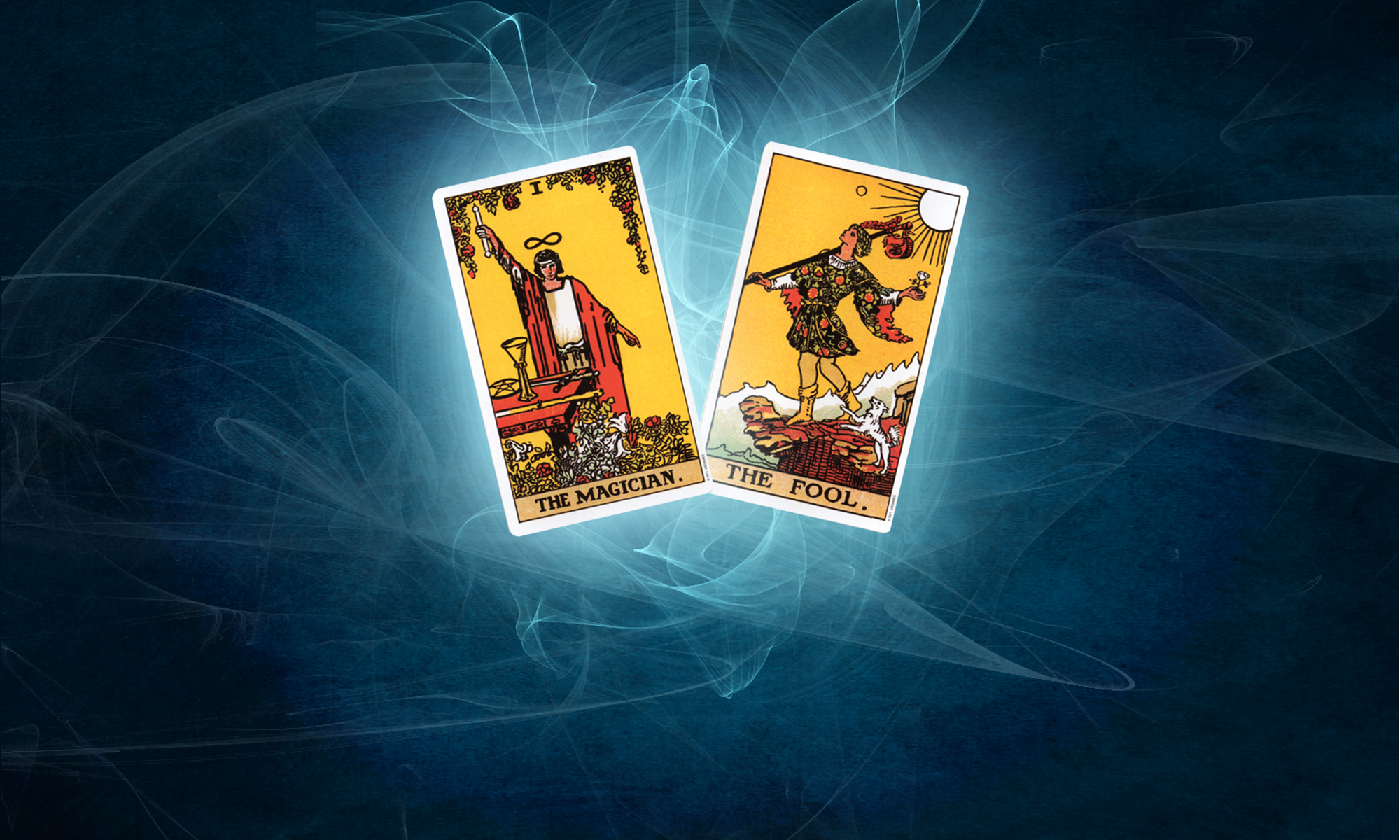
The Official Site of Susan Wands' Fantasy Series

January 31 – April at the Pratt Library, 200 Willoughby Ave, Brooklyn, an exhibit at Pamela’s former school of study will host an exhibit of Pamela’s works throughout three floors of the Pratt Library. Free to the public, open during campus hours.
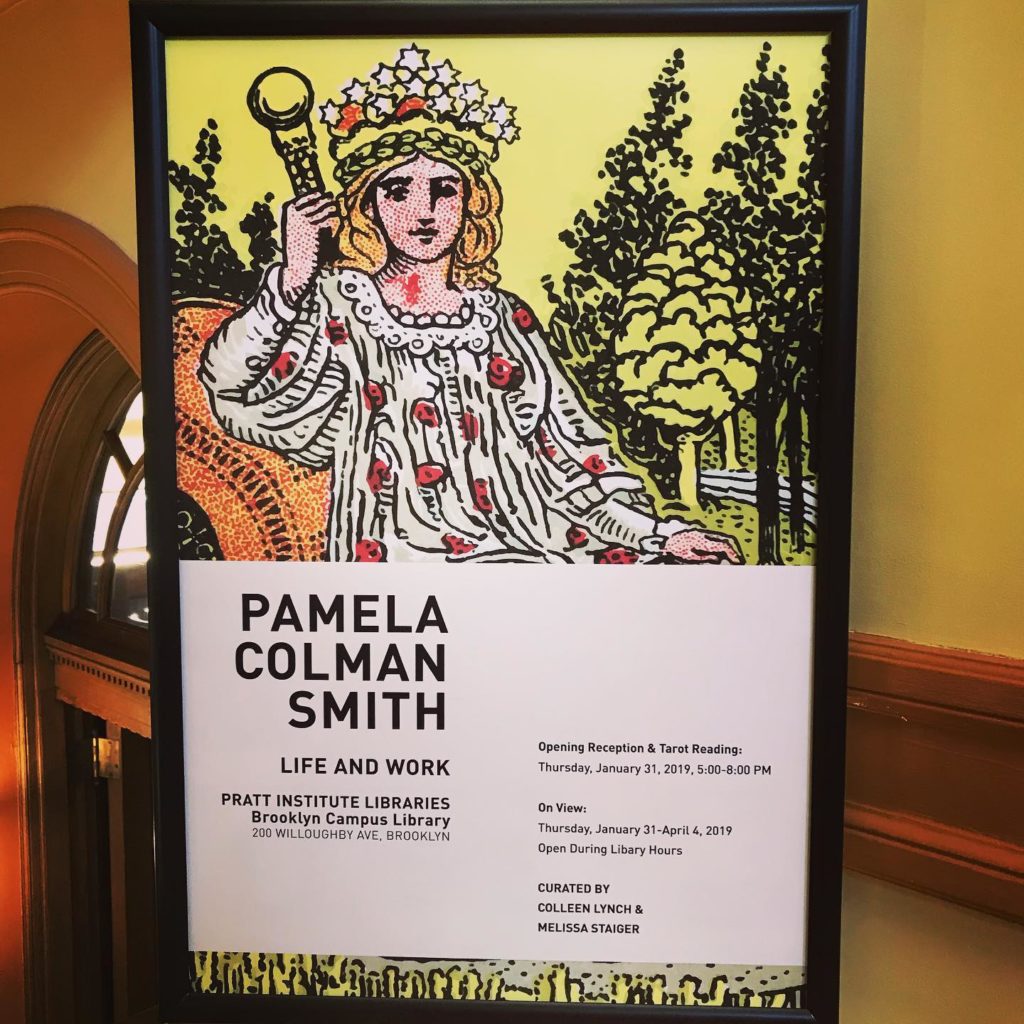
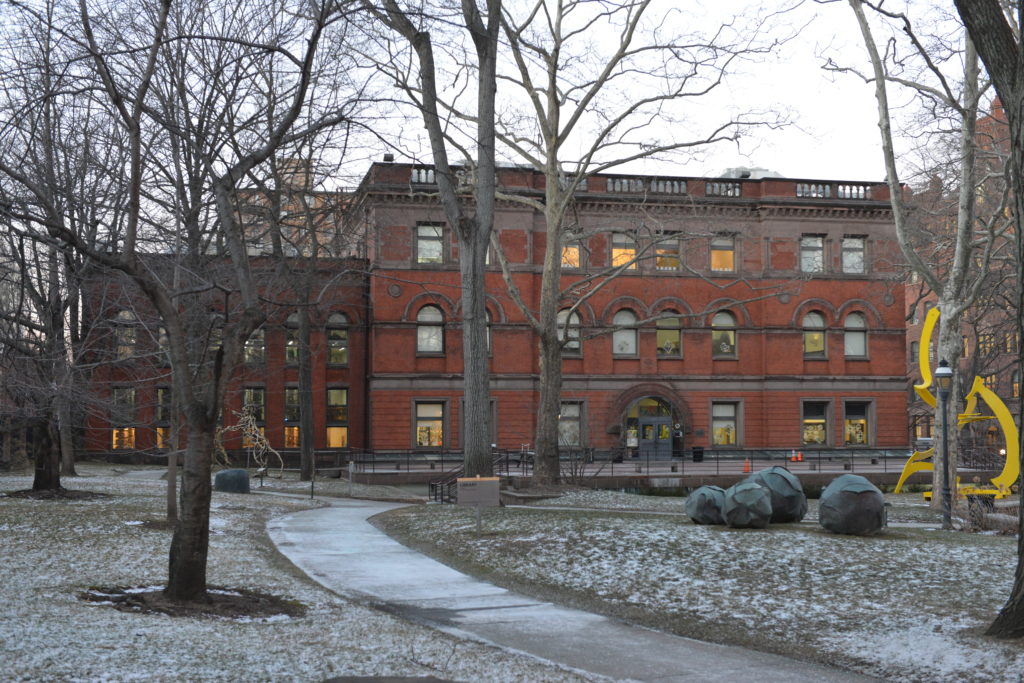
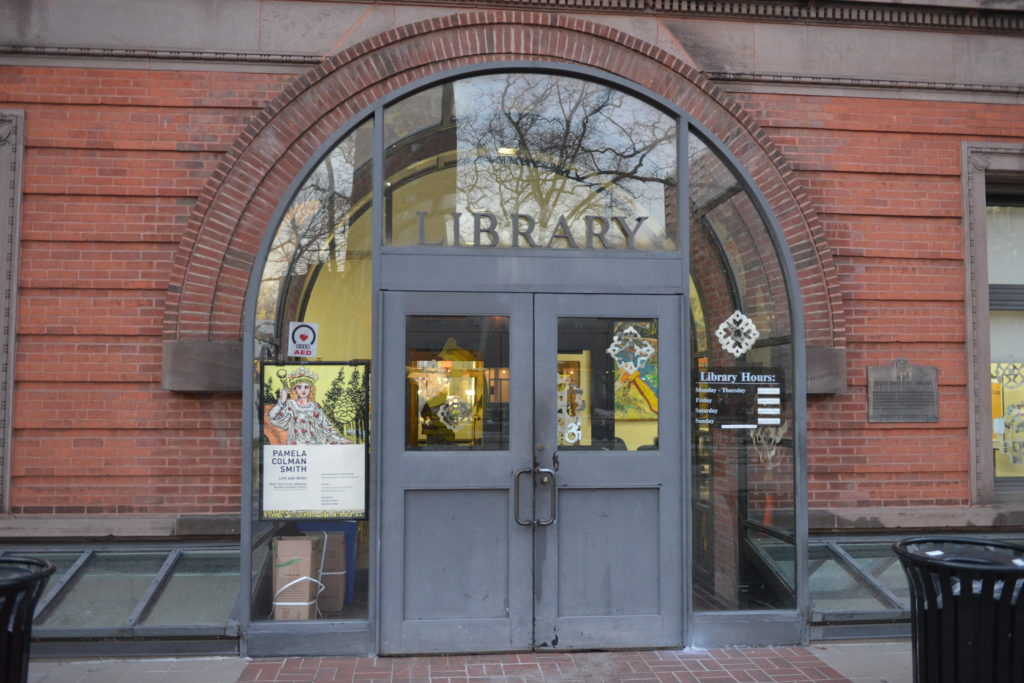
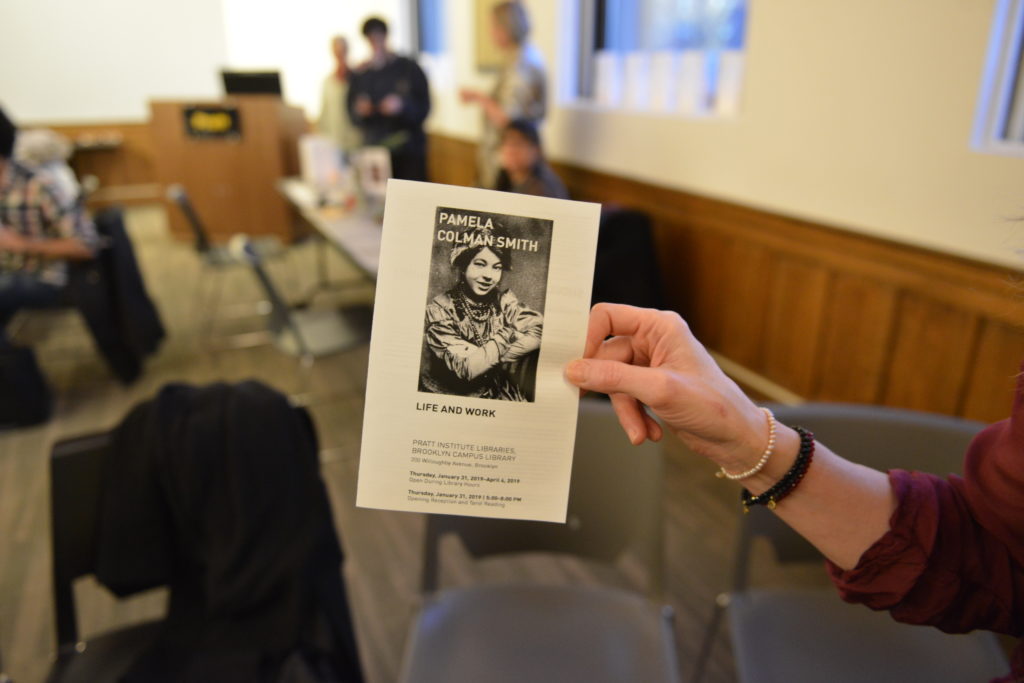
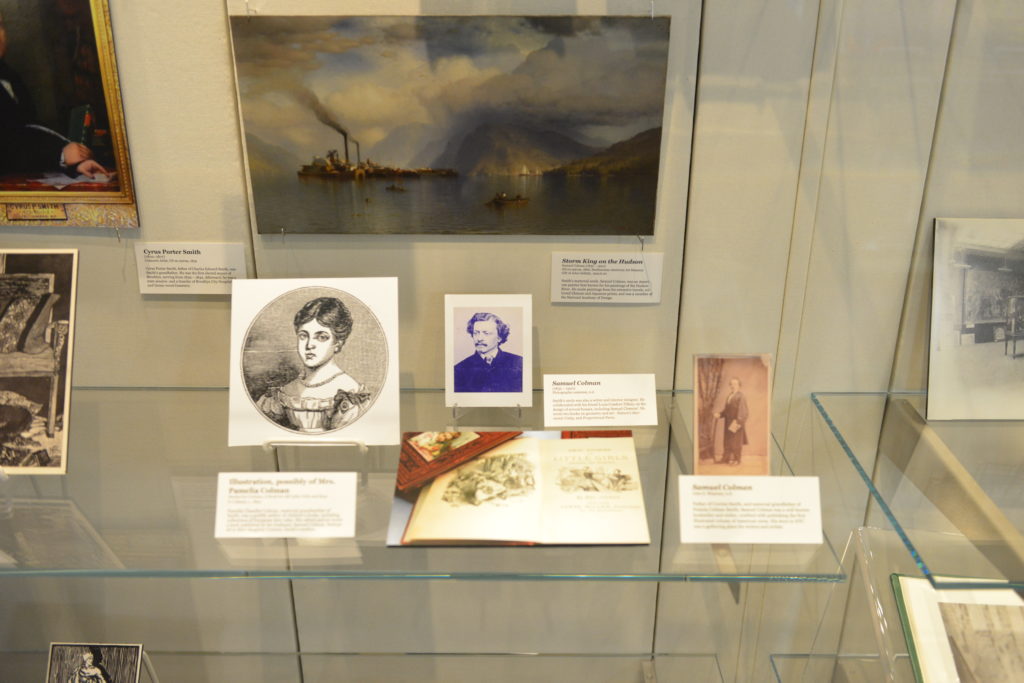
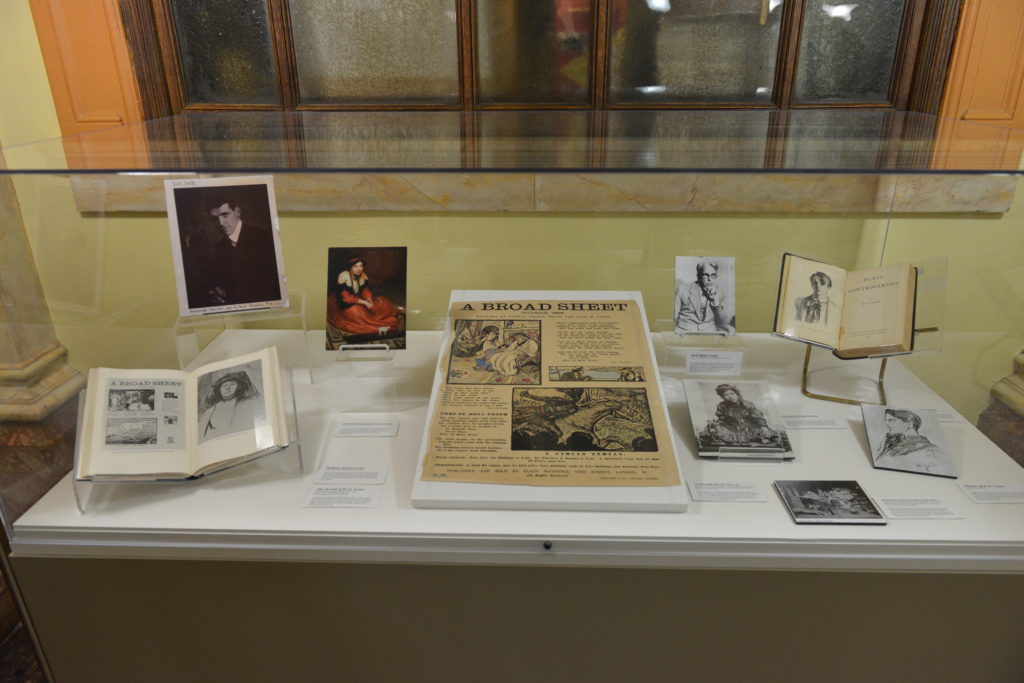
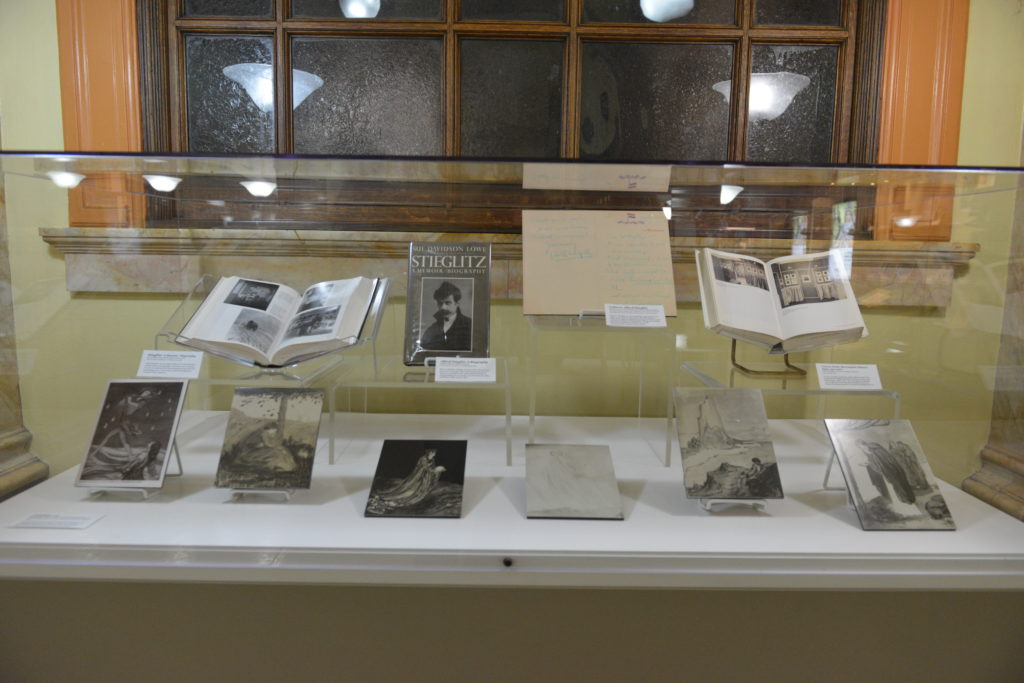

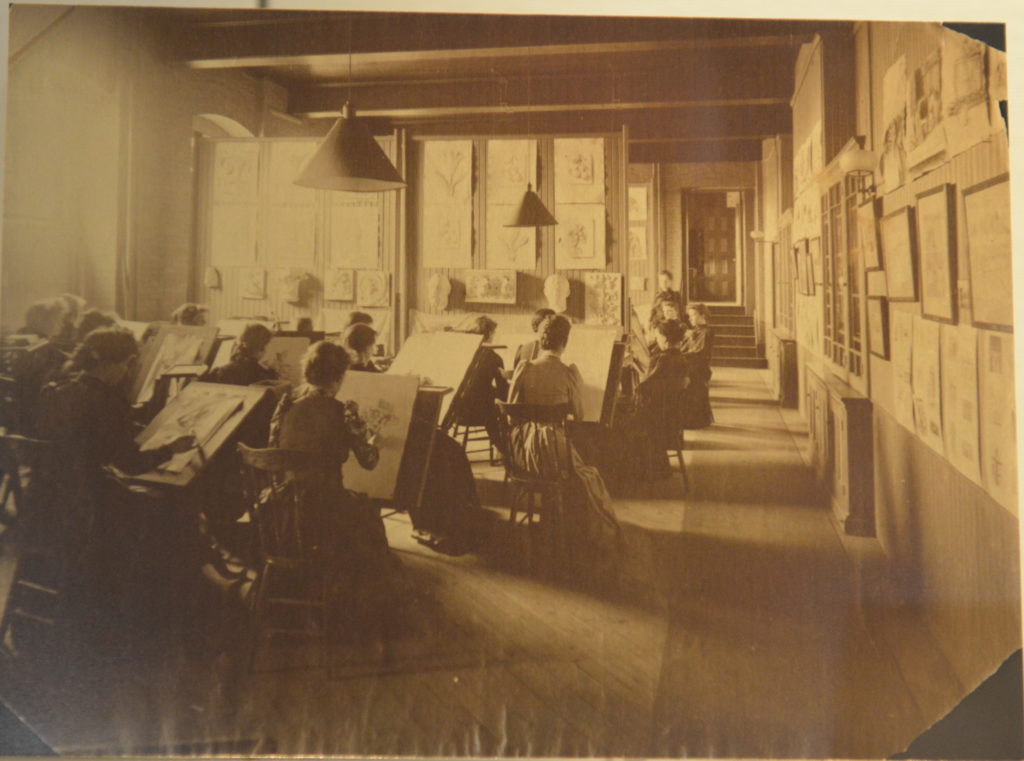
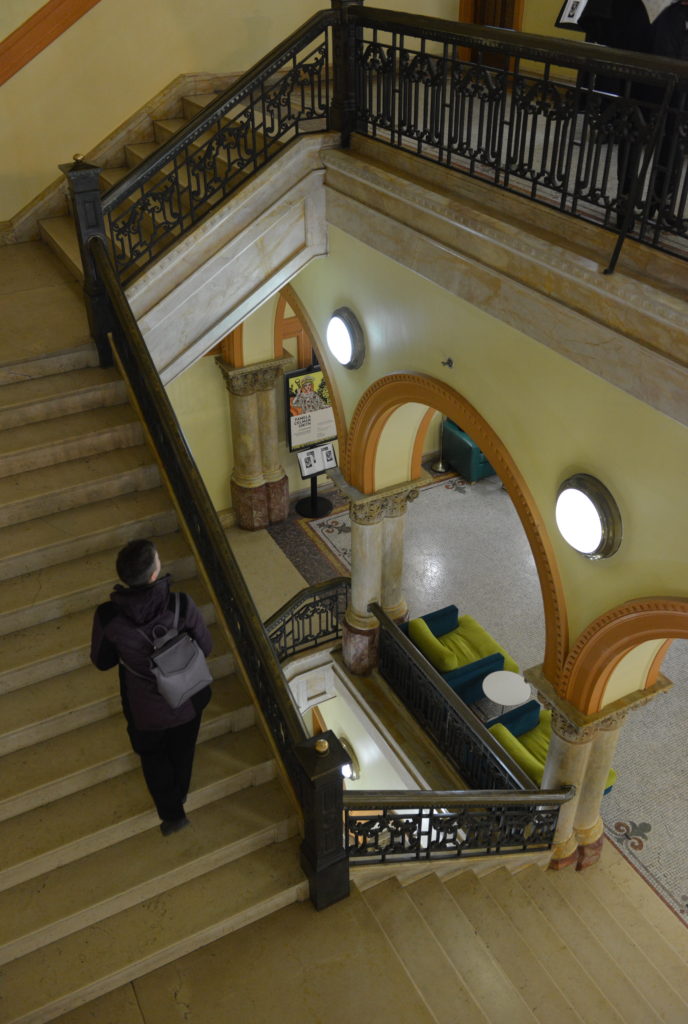
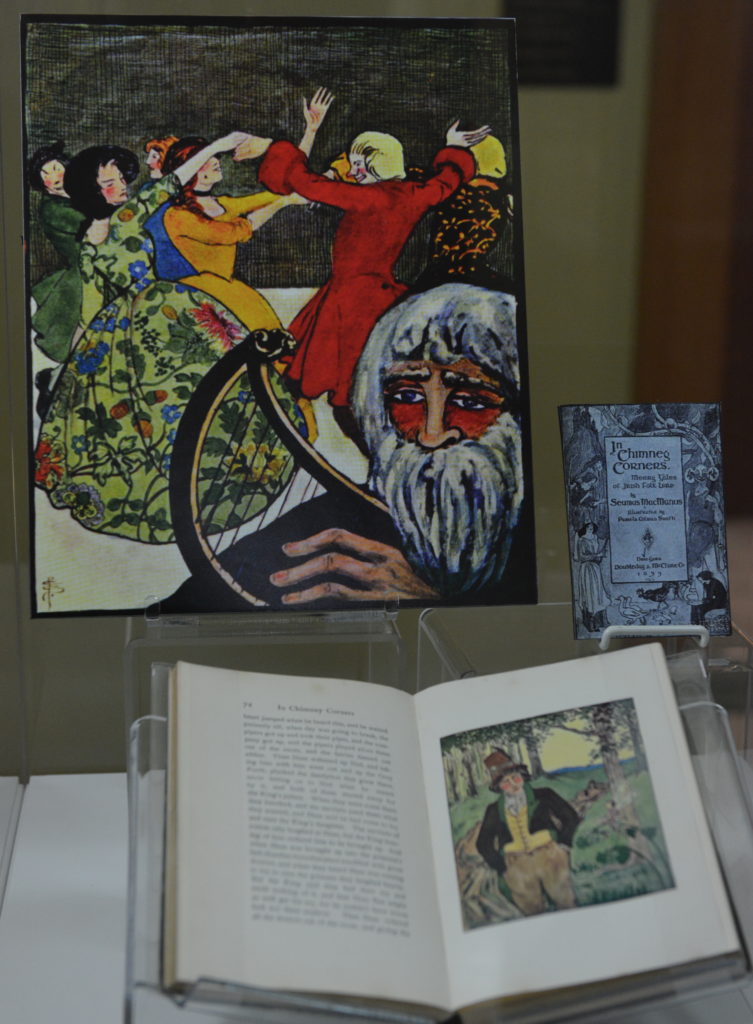
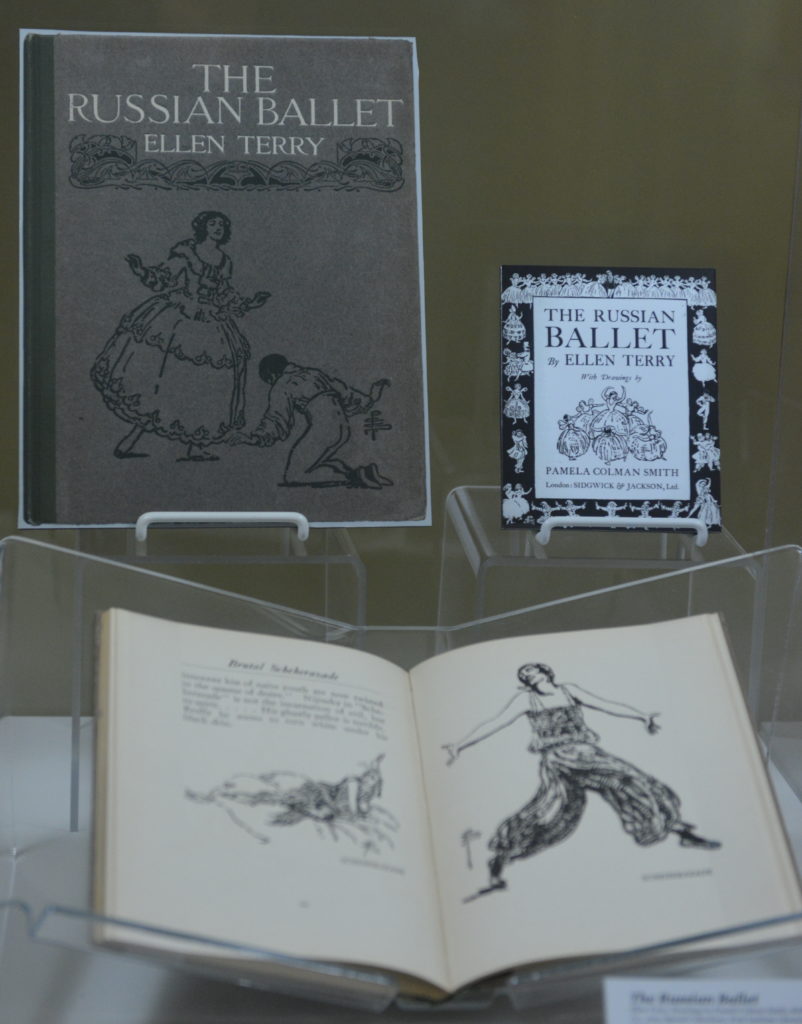
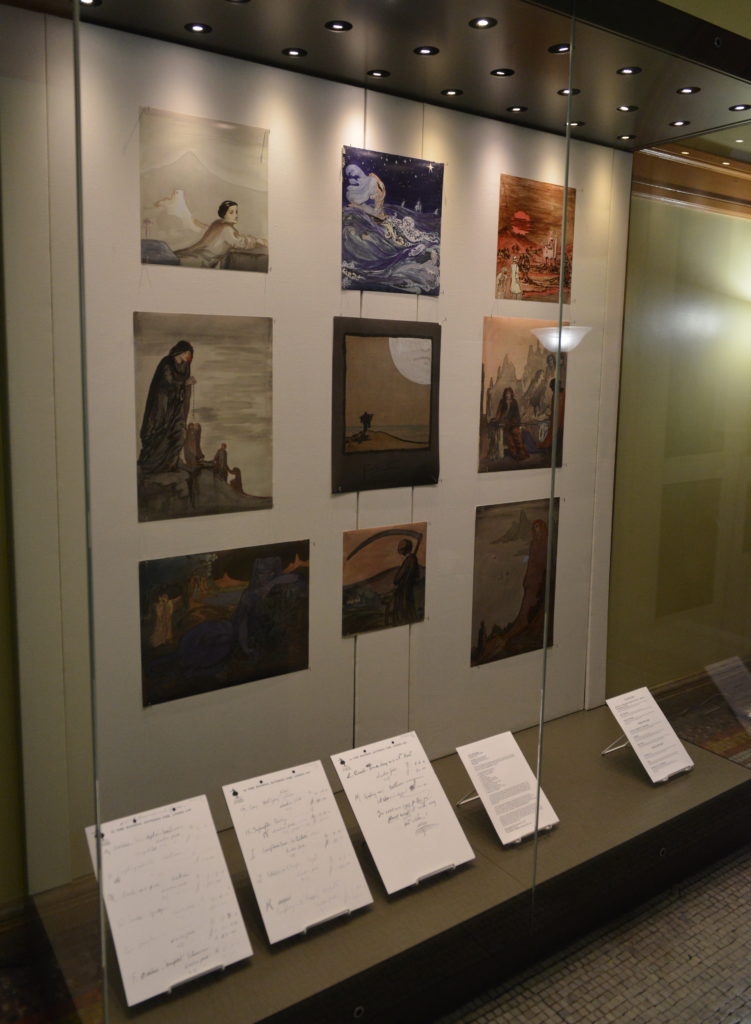
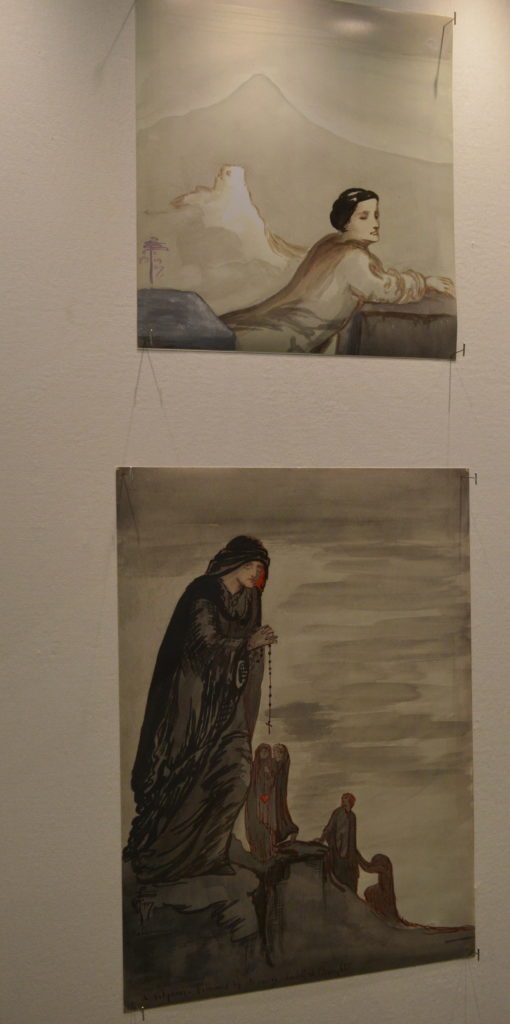
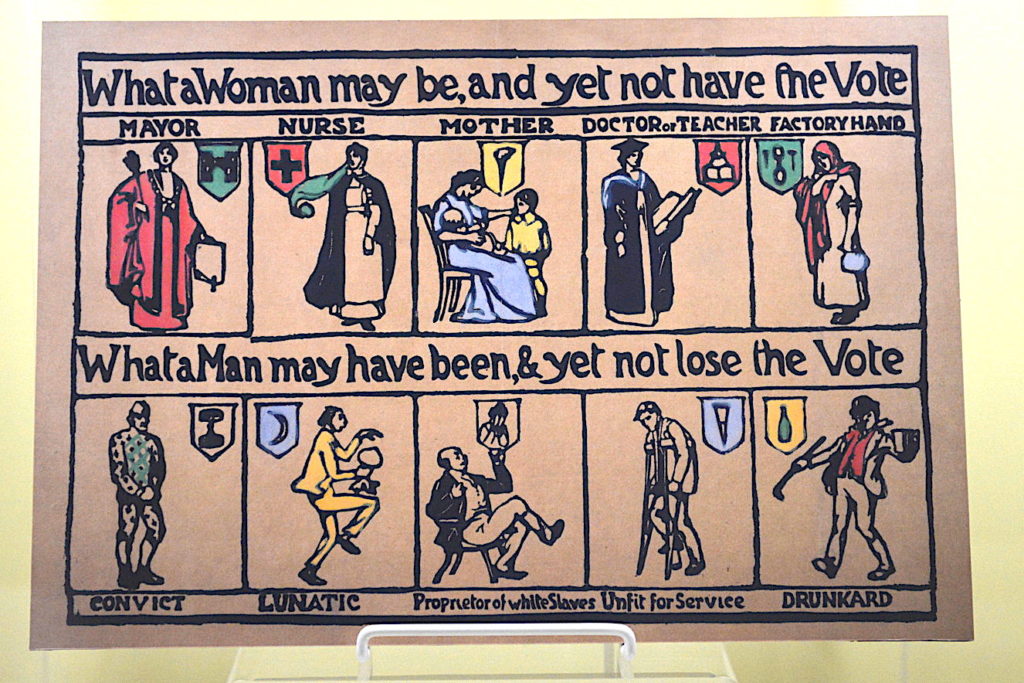
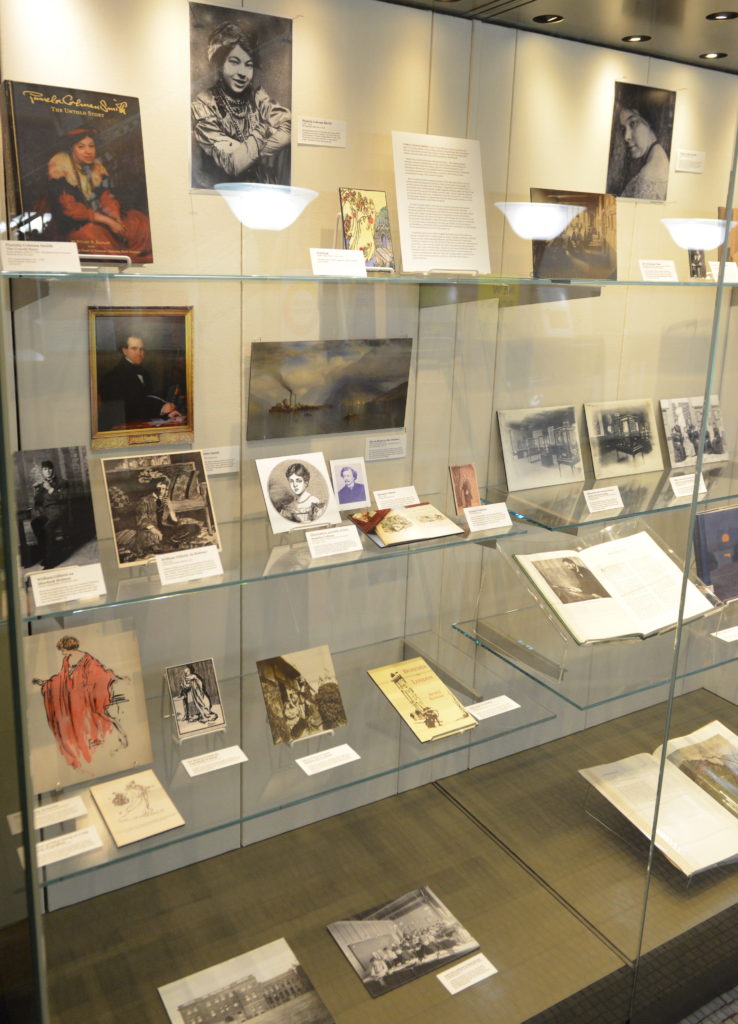
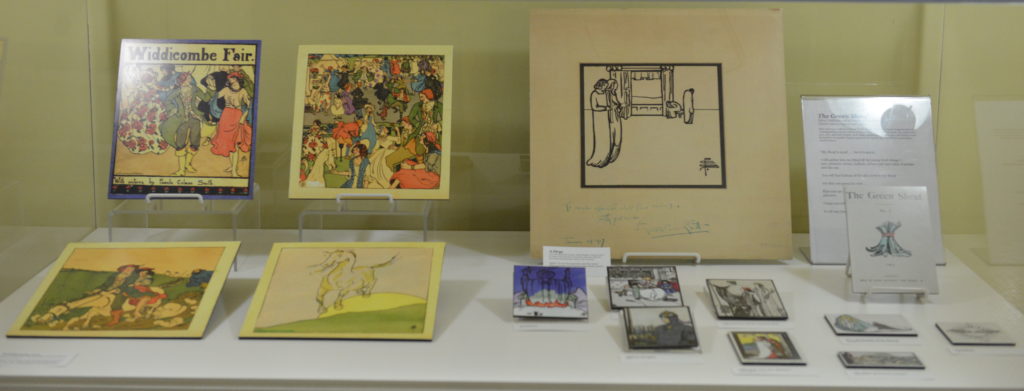
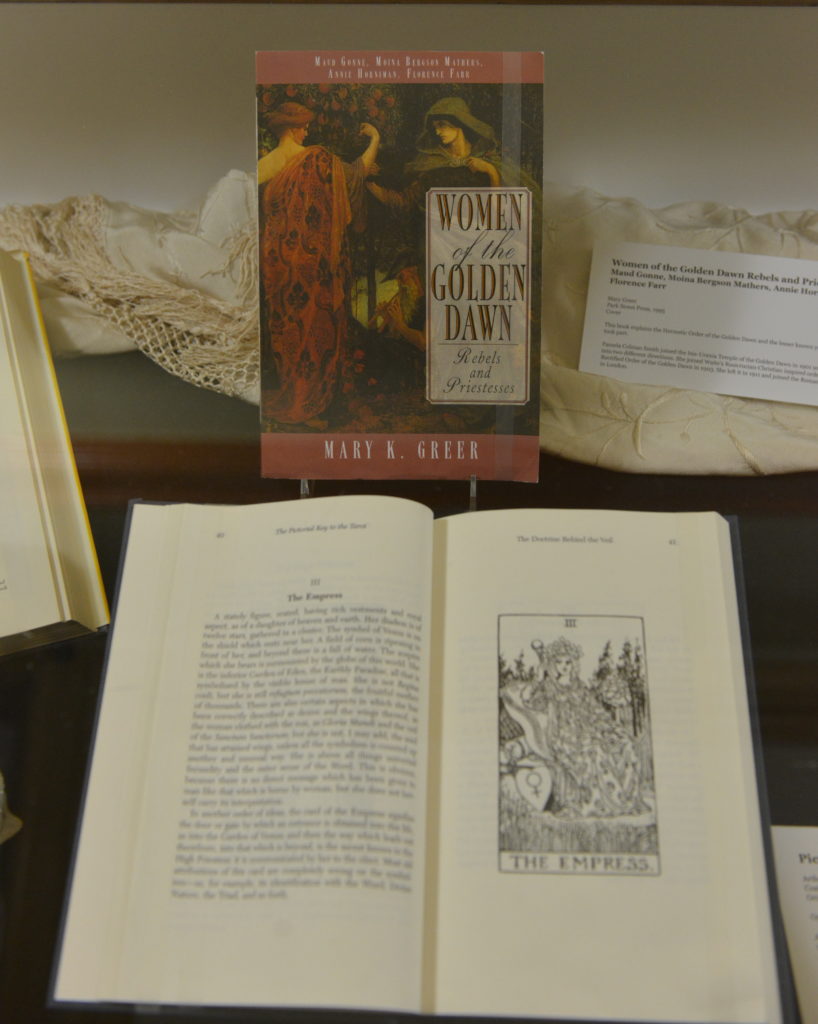
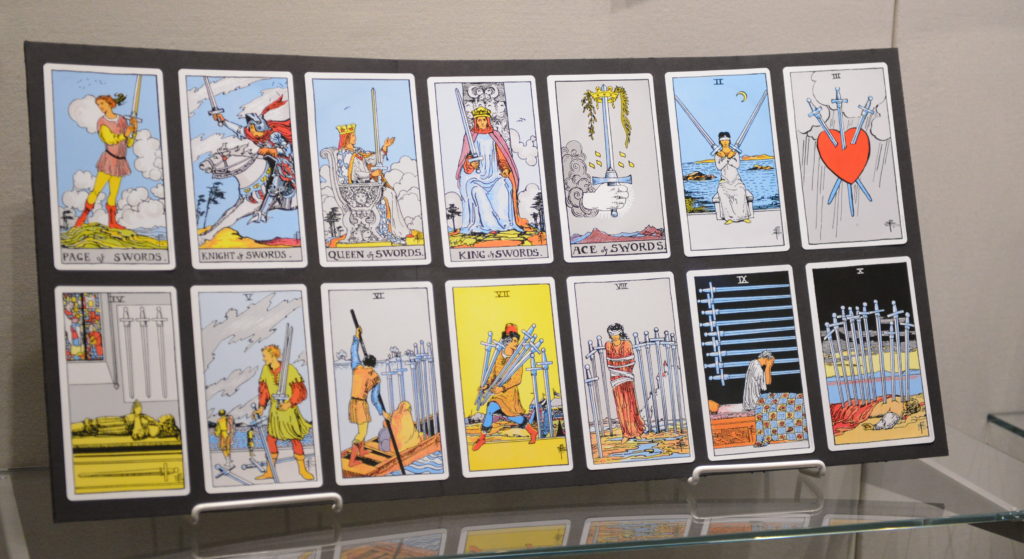

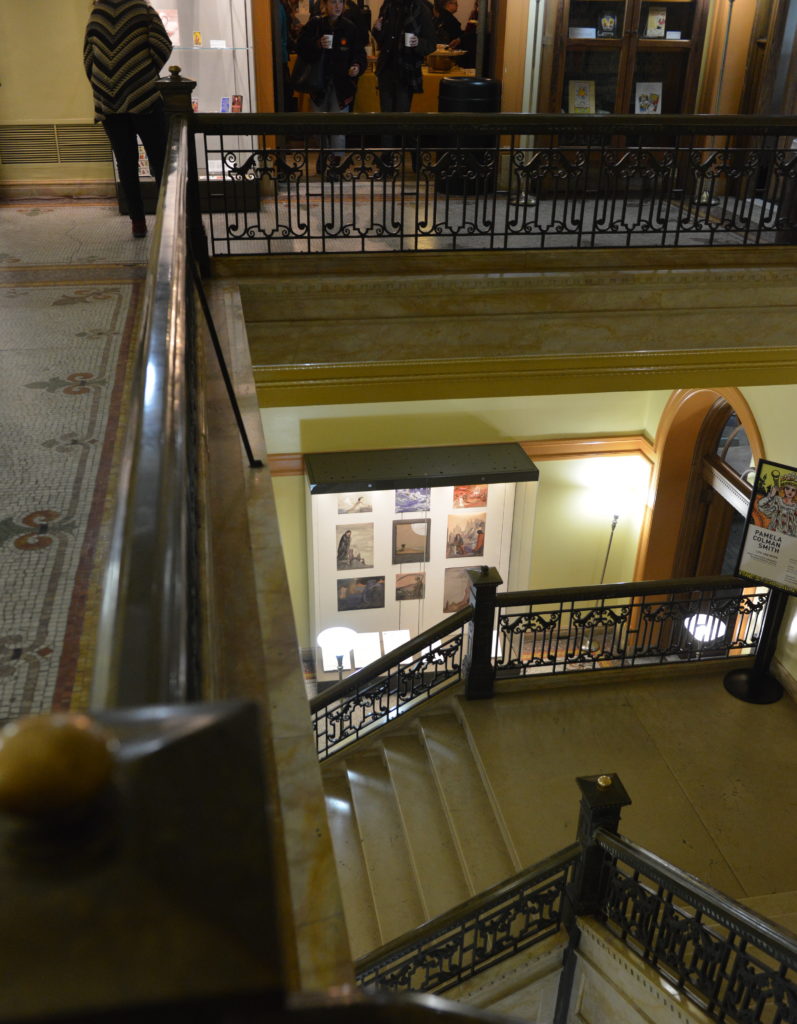
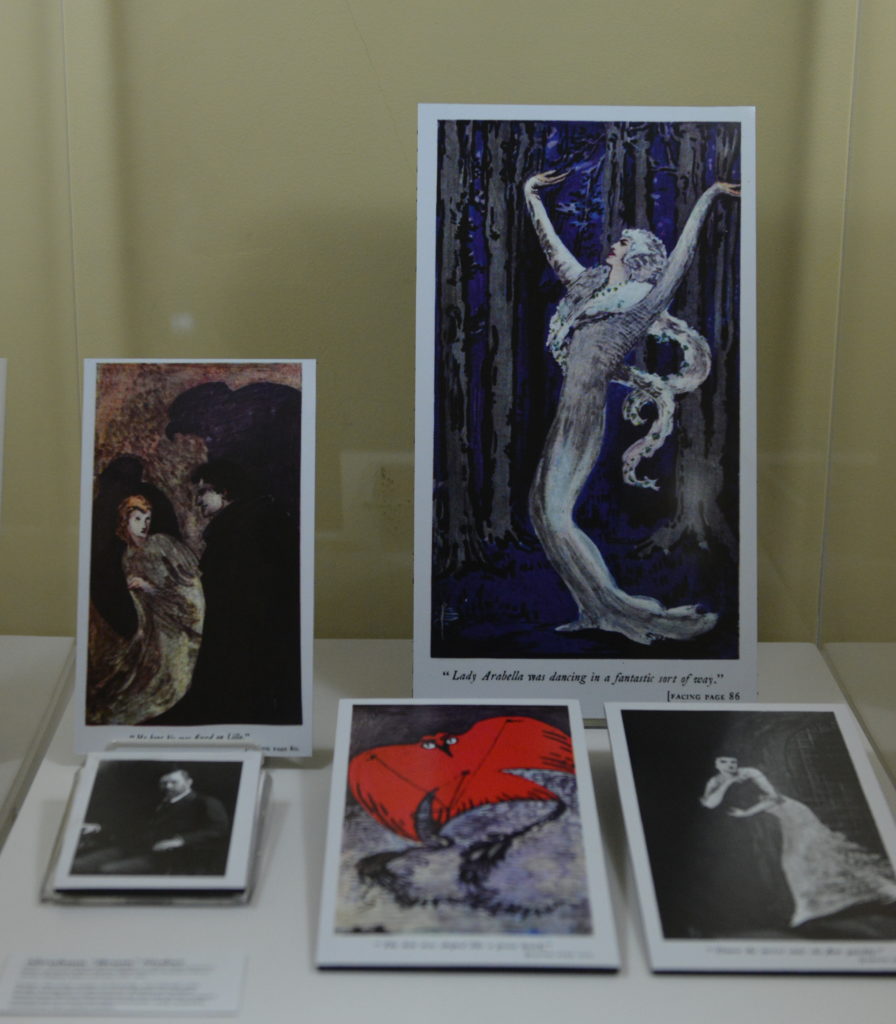
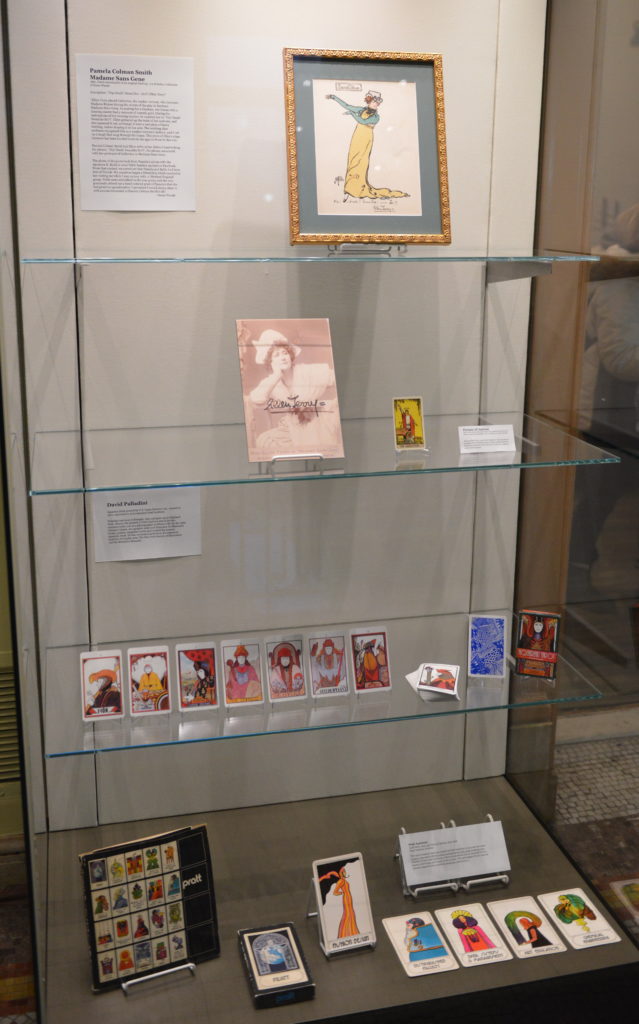
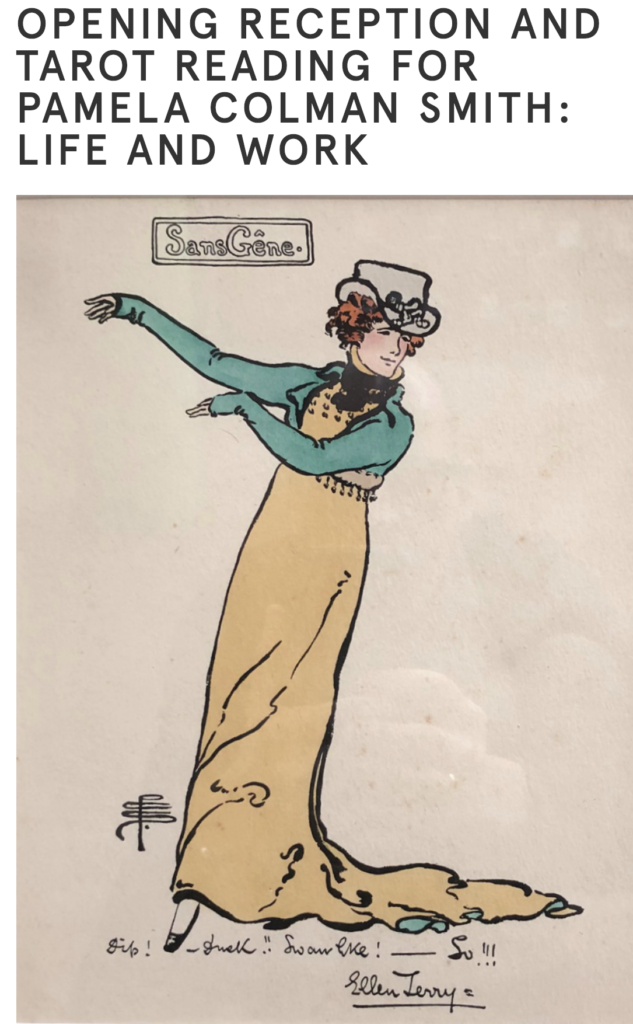
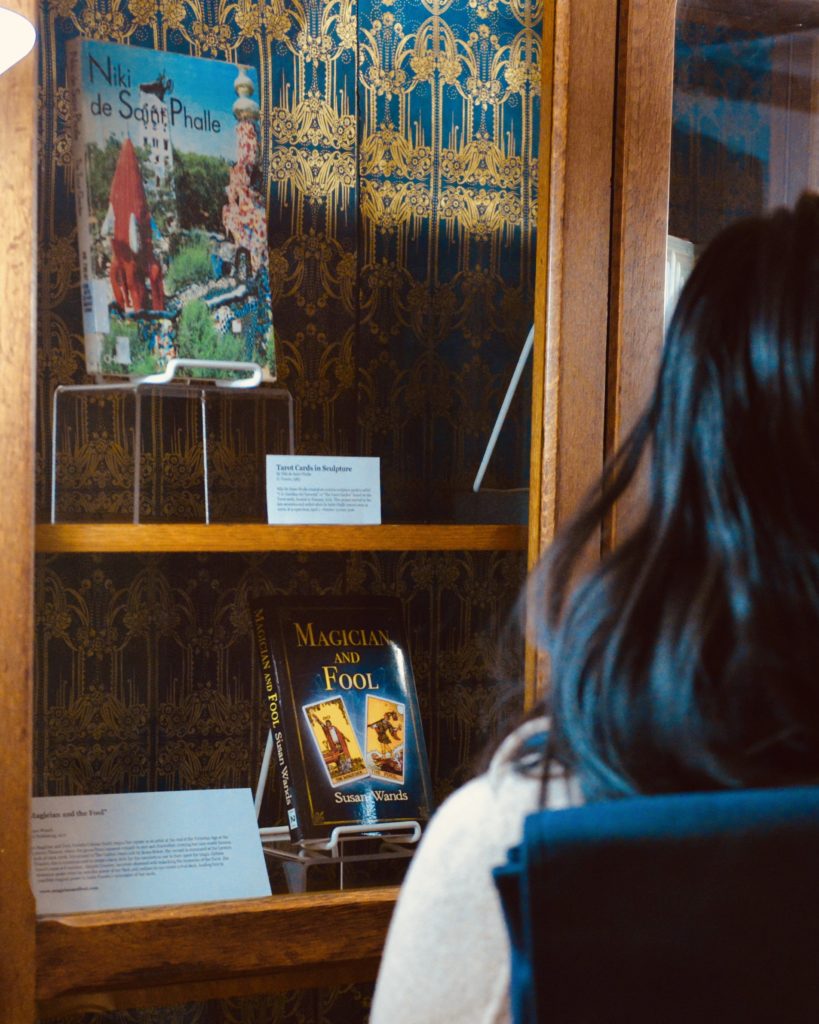
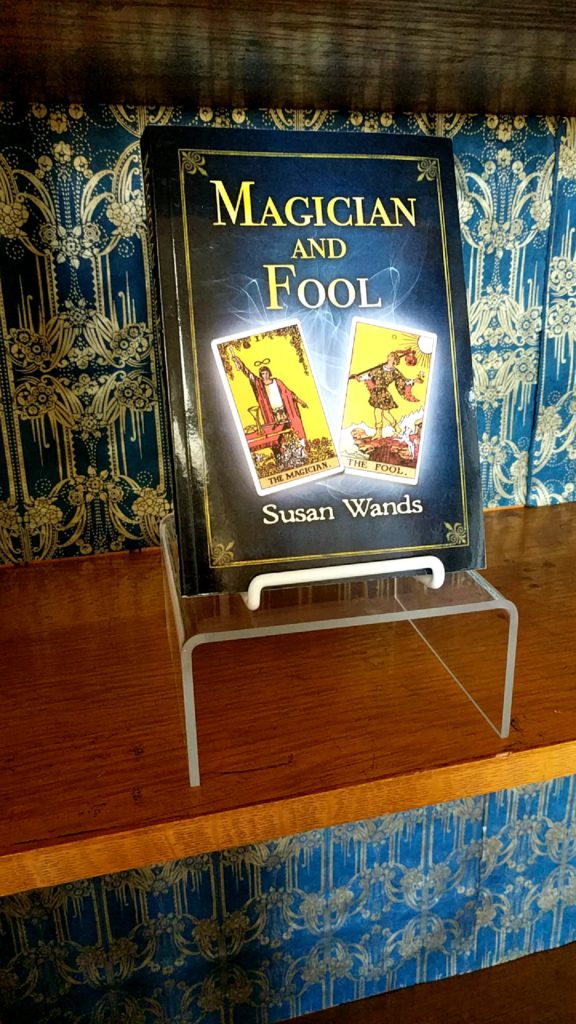
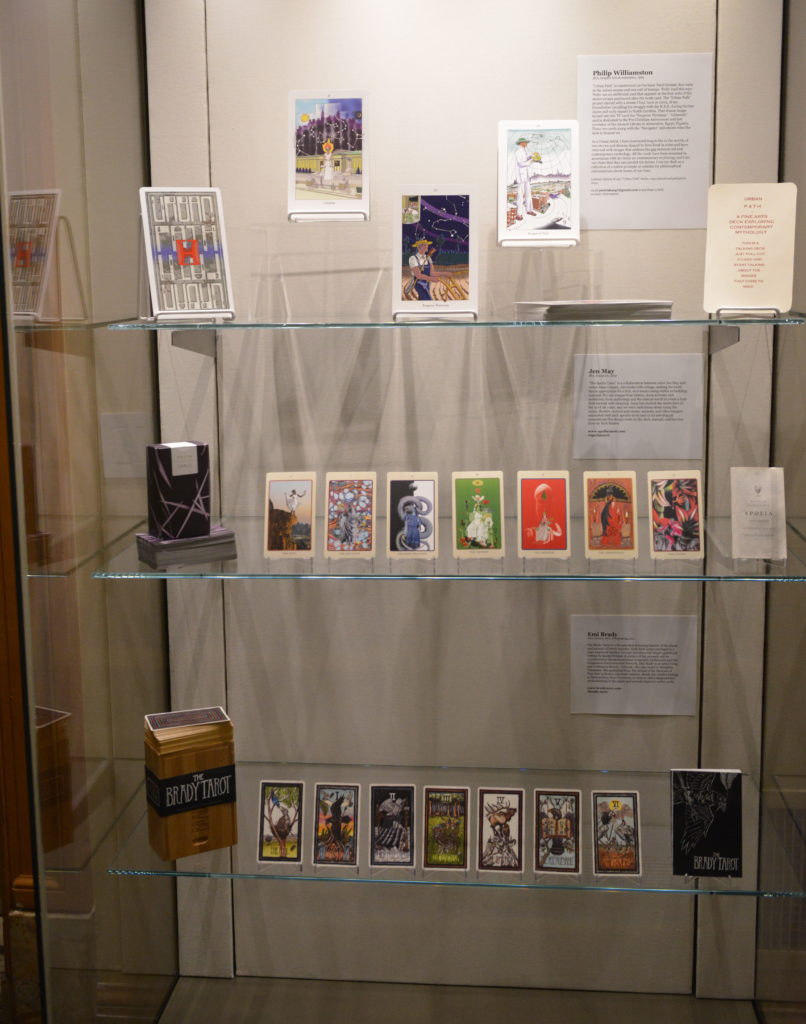
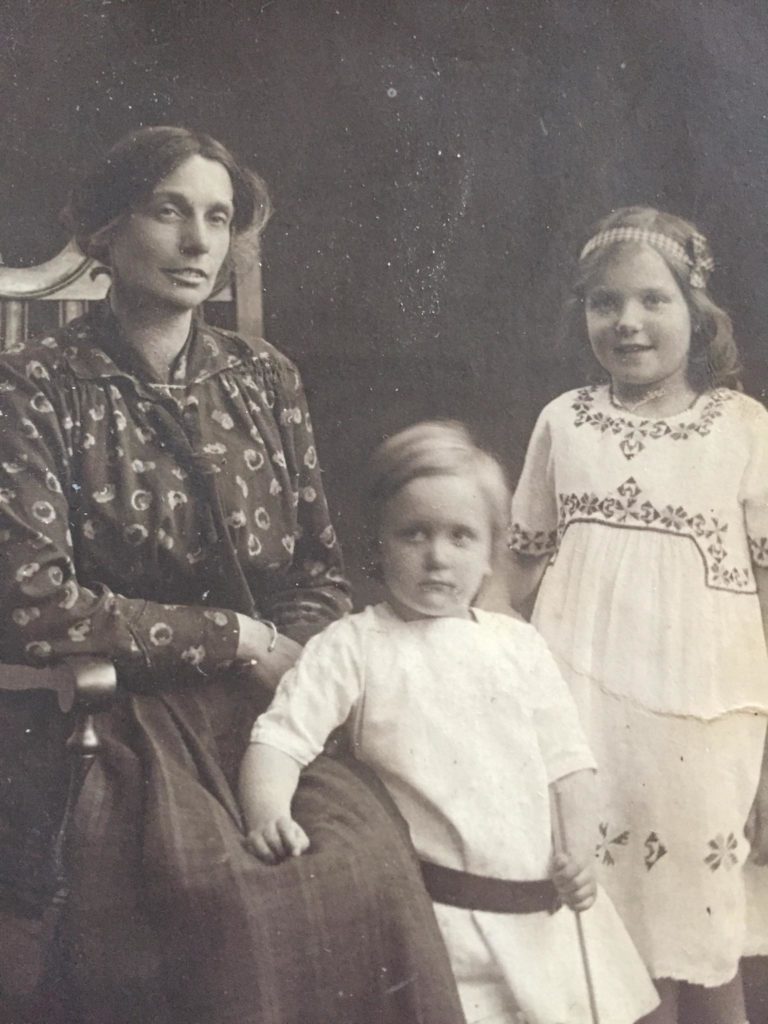
Berlin, November 3rd, I arrived in Germany to give a presentation at the Occulture Esoteric Conference held in East Berlin. When my cab drive, a charming Greek-born man named Napoleon, drove me by the entrance of the Anomalie Art Club, he expressed doubt that a conference was happening there. The neighborhood of Prenzlauer Berg is one of the most transformed areas of Berlin, the counter culture scene of the ’80’s and ’90’s evolving into an arts and cafe scene, generating much local speculation. Indeed, this wasn’t your typical hotel convention venue, but rather an almost clubhouse type wooden entryway with the Occulture Berlin poster tacked nearby. He drove me to the nearby accommodations that had been arranged for me and I sorted myself for a few hours before heading back.
When I came back, Johanna at the check-in desk led me to Giorgia Gia, who had invited me to the conference. Giorgia turned out to be a stunning tall woman with long black hair and a lilting accent. She led me around the courtyard. The Anomalie Art Club is an arts compound with several buildings centered around a large courtyard, with an open cafe. Wandering around, I saw vendors selling artwork, essentials oils, talismans, tarot cards, altar artifacts and memorabilia.
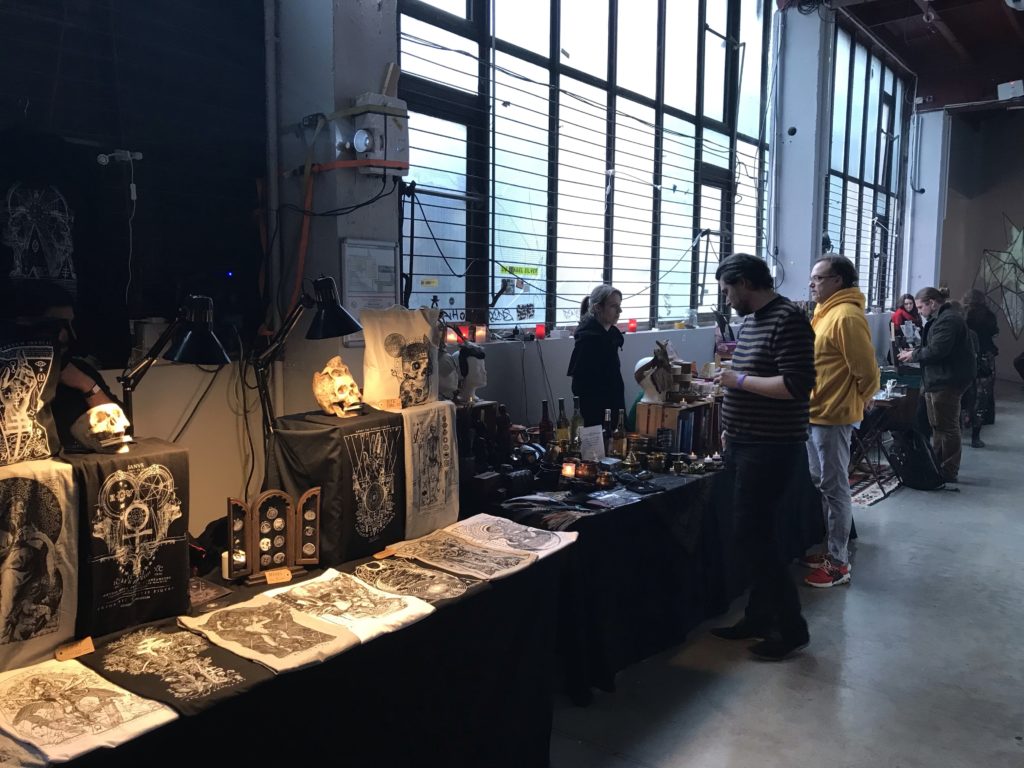
After I confessing I only three hours of sleep, she said she too was sleep deprived, she had gone to bed at 6am. The conference was three days in and this was the last day. Giorgia led us to the cafe where a potent shot of ginger extract snapped us both to life.
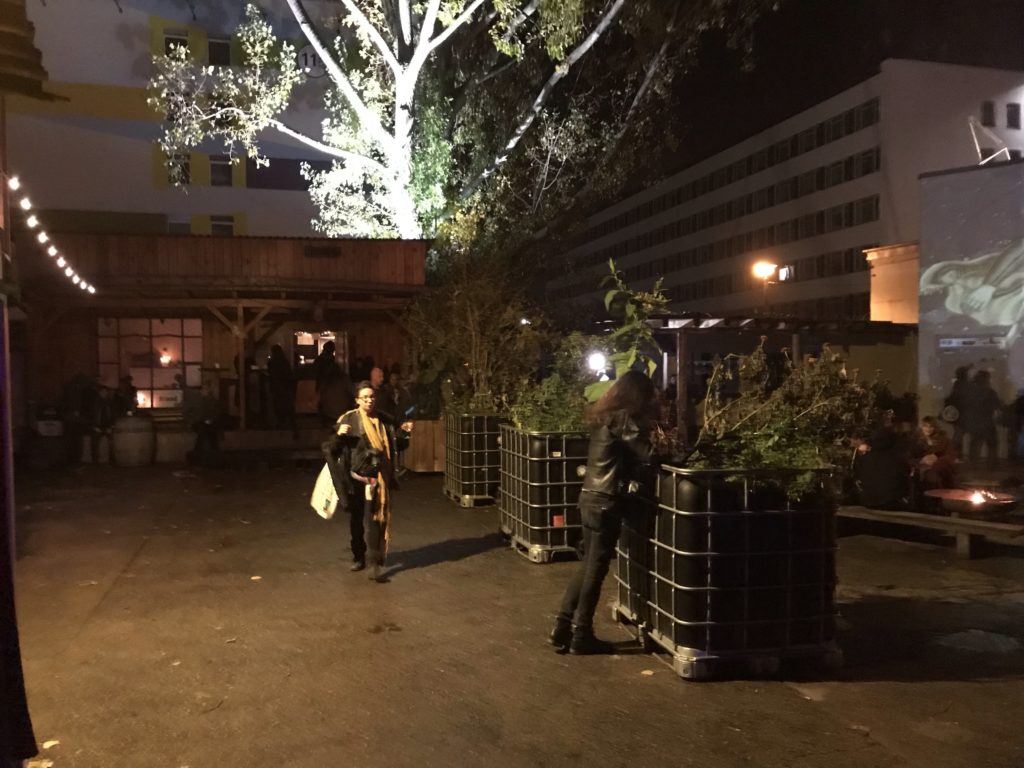
My presentation, Sigils, Spells and Symbols in Tarot Mythology, was scheduled late in the afternoon. It was a power point presentation but I knew during this Mercury Retrograde, that technical mishaps were likely. Thank the gods for Constantine, the Technical Director assigned to me, for sure enough when it was time to link my computer to the projector, my laptop computer would not connect. Then the thumb drive stick I brought with me would not read in the computer already there. But Constantine used his own thumb drive to copy the powerpoint on my computer and it worked in the computer there. The retrograde tried its best but Constantine beat it! The lecture room had a very groovy set design in back of the speakers, a sort of simple mandala and the room was very dark. It was a full house and a very receptive crowd.
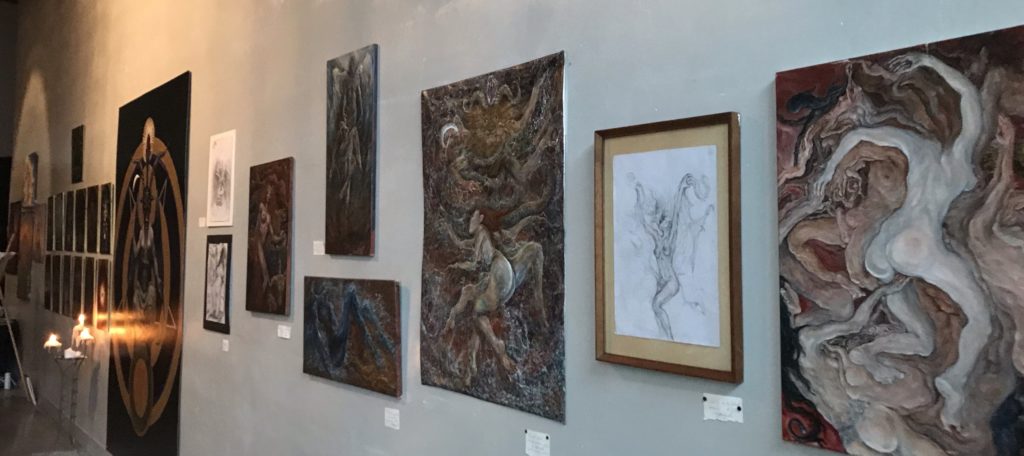
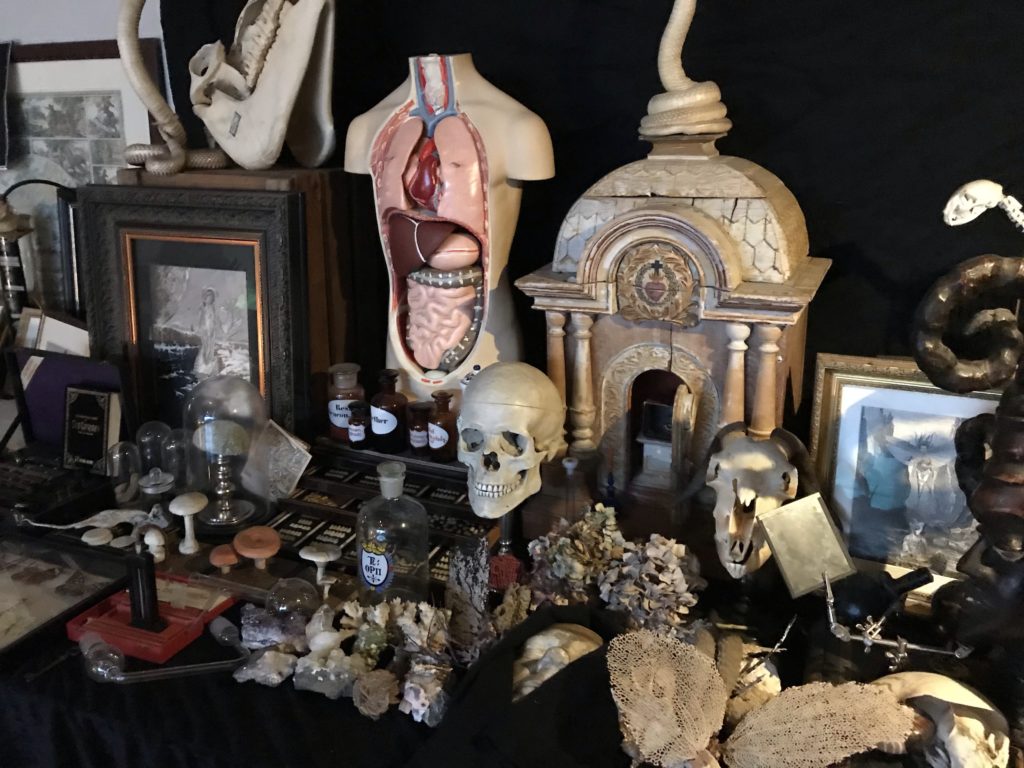
Sigils, Spells and Symbols in Tarot Mythology is somewhat of a specialized interest. I was pleased to see that even if the subject was familiar or new to the audience they were keen to follow along. I had mentioned there were many references and links to research that I would make available after the slide show and there was a fair stampede to the podium to pick up the lists I had brought, obviously not enough. I was fortunate enough to catch Geraldine Hudson’s talk ‘Where Does the Body End’ and David Bramwell’s interactive film, The Cult Of Water.
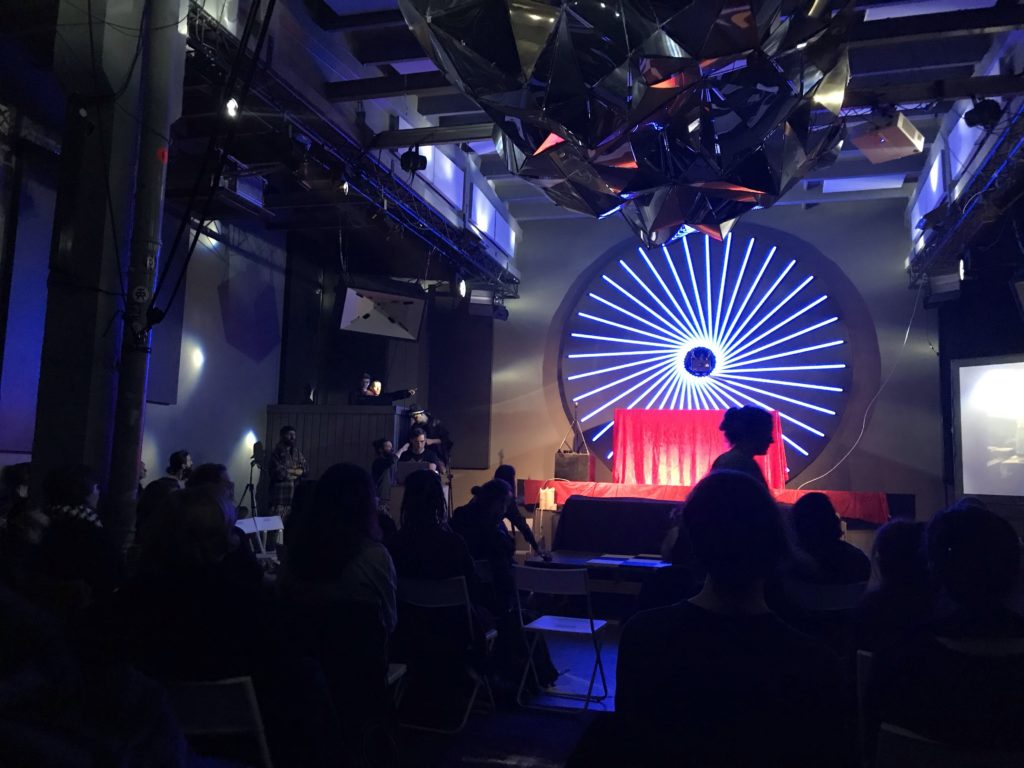
In my talk, I referenced Pamela Colman Smith, co-creator of the Smith Waite tarot deck and her use of her unusual signature as possible sigil. I brought along some copies of the first book in my series, Magician and Fool, which follows her path. I had requests for links for the book and questions for the release date of next two books, High Priestess and Empress and the next book, Emperor and Hierophant. (Watch this website space for news about the publication of all three books being published as a trilogy soon!) It was a delight to be included in this interesting and provocative ensemble. Thanks to Giorgia Gai for inviting me to Occulture Berlin 2019!
Here is a listing of the references and research covered in my talk: Sigils, Spells and Symbols in Tarot Mythology. I was chuffed that several friends sent on the news release of Salvador Dali’s tarot cards, referenced in my talk. Here is the blurb for the Dali tarot deck release:
In this listing of resources, you will find links for everything mentioned in my presentation, from Austin Osman Spare’s youtube videos to magical spell formulas.
Sigil Resources
golden-dawn.com/eu/displaycontent.aspx?pageid=312-sigils-from-the-rose
ultraculture.org/blog/2017/05/01/austin-osman-spare/
youtube.com/watch?v=l-cxBuRU09w
Podcasts/Magical Spells
Podcasts.apple.com/lb/podcast/badass-bitches-tarot-by-cardsy-b/id1415266589
tesswhitehurst.com/find-your-magic-with-this-tarot-spell/
Tarot Decks
Waite Smith – Edward Waite and Pamela Colman Smith
Thoth Deck – Aleister Crowley, Lady Freida Harris
Ethereal Visions – Matt Hughes
Johanna Gargiulo-Sherman – The Sacred Rose Tarot
Deviant Moon Tarot – Patrick Valenza
Bad Ass Bitches Tarot – Cardsy B
The Dark Woods & Haunted House Tarot – Sasha Graham
Universal Tarot – Salvadore Dali
Ghetto Tarot – Alice Meets
Mountain Tarot – Bea Nettles
The Relative Tarot – 2020 Carrie Paris
Akron Tarot – H.R. Giger
Tarot Revisioned – Leigh J McCloskey
THE KNIGHTING OF IRVING, May 24, 1895
The Ceremony Was Performed by the Queen
IT WAS A SIMPLE AFFAIR, a reporter’s account
Henry Irving, the first English actor, last week entered the lists as a knignt. This modern ceremony is very simple compared with the old days. The fortunate knight to be is presented at court in the regulation court costume; he kneels before Queen Victoria, who places a drawn sword, usually the sword of state, upon either of his shoulders and then says, ‘Rise.” The Queen then calls him by his Christian name with “Sir” before it.
The word knight meant originally a youth; it then came to mean a servant or military attendant, and finally it became restricted to the military attendants upon nobles and great officers of state. Tho origin of mediaeval knighthood as a solemn profession of arms is invested in obscurity.
The knighting of Henry Irving was of interest the world over. It seems to raise the dramatic profession a good many rounds on the ladder of social distinction. Heretofore actors have played before the queen in her court and have been good friends with the prince of Wales and his set, but the lines have been drawn very rigidly at the actors being presented at court.
It is said that the conviction that be social barrier, once broken down, would be of lasting good to his profession influenced Irving more than any other consideration. The great actor is thoroughly in accord with the art spirit, thoughts and customs of this end-of the-century time, but he is, above and beyond all, an actor and an artist.
An excerpt from Emperor & Hierophant, by Susan Wands, the series based on Pamela Colman Smith:
The actual knighting ceremony was sparse, a presentation to the Queen for his investiture ceremony was part of several other honors being dolled out that day, but others being dubbed had supporters who were welcomed into chairs in front of the throne to witness the event. It was thought best with an estranged wife and Henry representing the dubious reputation of the acting profession that his investiture should proceed without too much fanfare or presence of guests to make the newspapers. So, Ellen Terry attending was not considered. He wore regulation Court formal wear and following a bevy of the Beefeaters down the hall from the recipient’s waiting room, was conducted into the throne room. Three hundred guests, formally dressed and seated, were being serenaded by harp music in front of the throne. The Queen, at seventy-six was still wearing the widow’s weeds of her black formal dress, and perched very low on her royal seat. An attendant at the side called out: ’Mr. Henry Irving, for service to the theatrical world.’ On the small bench in front of the Queen, he knelt, where she placed a drawn sword on either side of his should and commanded, ‘Rise, Sir Henry.” He stood beaming, the first actor ever to be knighted. She motioned for him to stand a little closer. The old Queen looked up at him, her round, wrinkled face almost smiling, and softly said, “I am very glad of it”. His eyes, dark and slightly damp, blinked in response; for once he couldn’t think of anything to say, the lump in his throat blocking any sound. She extended her royal hand, a quick hand shake followed and the ceremony was over. He reversed back a few feet, bowed, turned and went out of the room.
Titles were very dear, for just three hundred years previous, performers were servants and the stage was only permitted by royal decree. To be ‘Sir Henry’ was a huge step, as actors were not permitted at court and the identity of the actor was seen as a criminal and vagrant. There were those who thought Ellen should also be titled, but being an unmarried mother of two was an offense that would limit her title to ‘Our Lady of the Lyceum’, the title Oscar Wilde had given her. However, the estranged wife, Florence Irving, would insist on retaining the title ‘Lady Irving’, regardless of the fact that she and Henry had not laid eyes on one another since he left fourteen years ago. A few years after his, Henry did not want to be listed as ’Sir Henry’ as of late in the playbills, he felt he was more a player of the pit than a player of the great people in charge. Now, ‘Gove’nor’, ‘Mr. H’ or ‘Mr. Irving’ were all titles he answered to when addressed.
 Loretta Goldberg, Linda Trice, Susan Wands
Loretta Goldberg, Linda Trice, Susan Wands
When Loretta Goldberg from the NYC Chapter of the Historical Novel Society invited me to be part of a panel celebrating unusual protagonists, ‘Pushing Boundaries’, I leapt at the chance. I would be on a panel with authors, Linda Trice and Jeanne Mackin. Linda Trice, author of Charles Drew: Pioneer of Blood Plasma, and Jeanne Mackin, author of The Beautiful American, Dreams of Empire and The Queen’s War, and I would be discussing be discussing our latest published books. Linda’s protagonist, Charles Drew, was an African-American doctor who developed a method of preserving blood and Jeanne’s recent book, The Beautiful American, revolves around Lee Miller, the muse for Man Ray and photographer post WWII. Pamela Colman Smith, the protagonist for Magician and Fool, would be my area of expertise.
Writing can be a lonely business, and with historical fiction there are worlds to cross-reference and incorporate before you ask anyone to read even a rough draft. Researching the unusual lives you fall love with can be inspiring, maddening and illuminating. Then comes the challenge of trying to siphon this distilled knowledge and perspective into a compelling narrative. So, to be on a panel with two other authors who have walked the walk getting their stories published was tremendously gratifying.
The NYC Chapter meets in the Jefferson Market Library, a space rife with the ambiance of historical events. When the Jefferson Market was a courthouse, Mae West was hauled in on obscenity charges when her Broadway play Sex was the aim of the Society for the Suppression of Vice. Next door, was the Women’s House of Detention, where women were detained on charges ranging from prostitution to protesting the Triangle Shirtwaist Company. The spirit of unusual women who pushed boundaries definitely resounded in the Willa Cather room, in what is now known as the Jefferson Market Library. The audience, which was standing room only, (meaning stacked chairs had to be continuously unloaded in the Willa Cather room); and it was a wonderful mix of friends and new acquaintances.
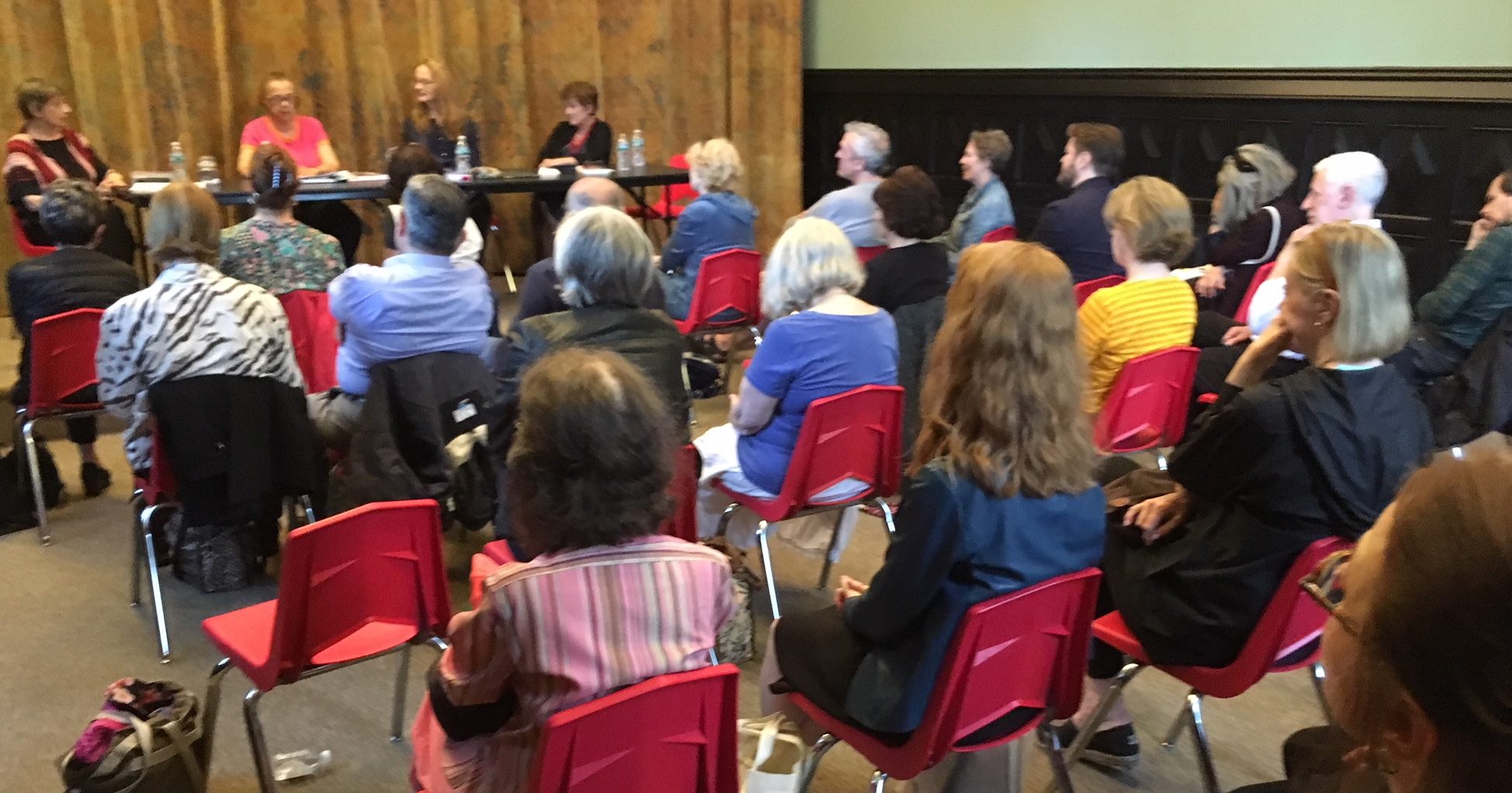 Willa Cather Room at the Jefferson Market Library, NYC
Willa Cather Room at the Jefferson Market Library, NYC
We each had a short amount of time to introduce our subjects and then Loretta opened up to the floor to questions and answers. The inquiries and interactions ranged from where certain tarot cards in Pamela’s deck came from to where Jeanne Mackin’s photographs of Lee Miller originated and how Linda Trice researched Charles Drew’s story. A few questions centering on the perspective of historical fiction were raised: how do you invent dialogue for someone who actually lived? what perspectives of history are held to when telling one person’s story? Does historical fiction rewrite history? These questions always invigorate me, as I came to love and want to learn more about history from historical fiction. If you spend enough time with your protagonists, they become almost like family in your mind, so being asked questions about them, for me, generates the same feeling of someone wanting to see photos of your children or your pets.
Which brings up the unusual aspects of Pamela, my protagonist, who continues to push boundaries. She was a prolific artist, an activist and unsung contributor to the tarot world. Only recently have Pamela’s contributions begun to be acknowledged, there are several biographies of her coming out in 2018 alone. And because so little was known about her, researching her life, in collaboration with others who are equally obsessed with her life story, has been a joint thriller in assembling the pieces. Because my take on Pamela embraces her psychic abilities, some of the proceedings in my historical fiction take on the added genre of fantasy, although I have adhered to the facts known about her place of birth, heritage and work experiences. It is always thrilling to find yet another person who interacted with her, whether it is a Catholic priest or doctor opening up a sanitarium. The characters in Magician and Fool all convened when the worlds of science and occult mixed, this age of discovery from Pre WWI to the end of WWII. Listening to Jeanne talk about the photographs of Lee Miller which inspired her and Linda Trice discuss the discoveries of Charles Drew revealed the same excitement as when I find a new piece of artwork by Pamela.
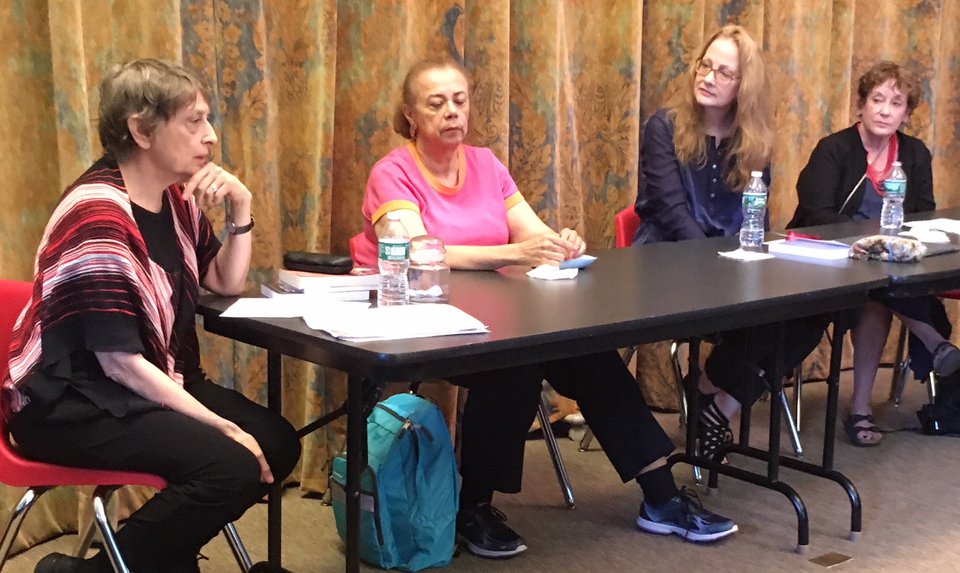 Loretta Goldberg, Linda Trice, Susan Wands, Jeanne Mackin
Loretta Goldberg, Linda Trice, Susan Wands, Jeanne Mackin
And as Pamela’s life story takes on more light, I cherish these untold stories of people who were not necessarily celebrated or acknowledged in their lifetime. The lesson continues to be to continue to contribute, regardless of outcome. Pushing a boundary may not be pleasant, immediately rewarding or satisfying, but it is necessary, a compulsion. The voices of the offbeat, the artist coloring outside the lines, living the unconventional life inspires others to test the waters. The waters may not always be smooth, or even warm, but they are vast.
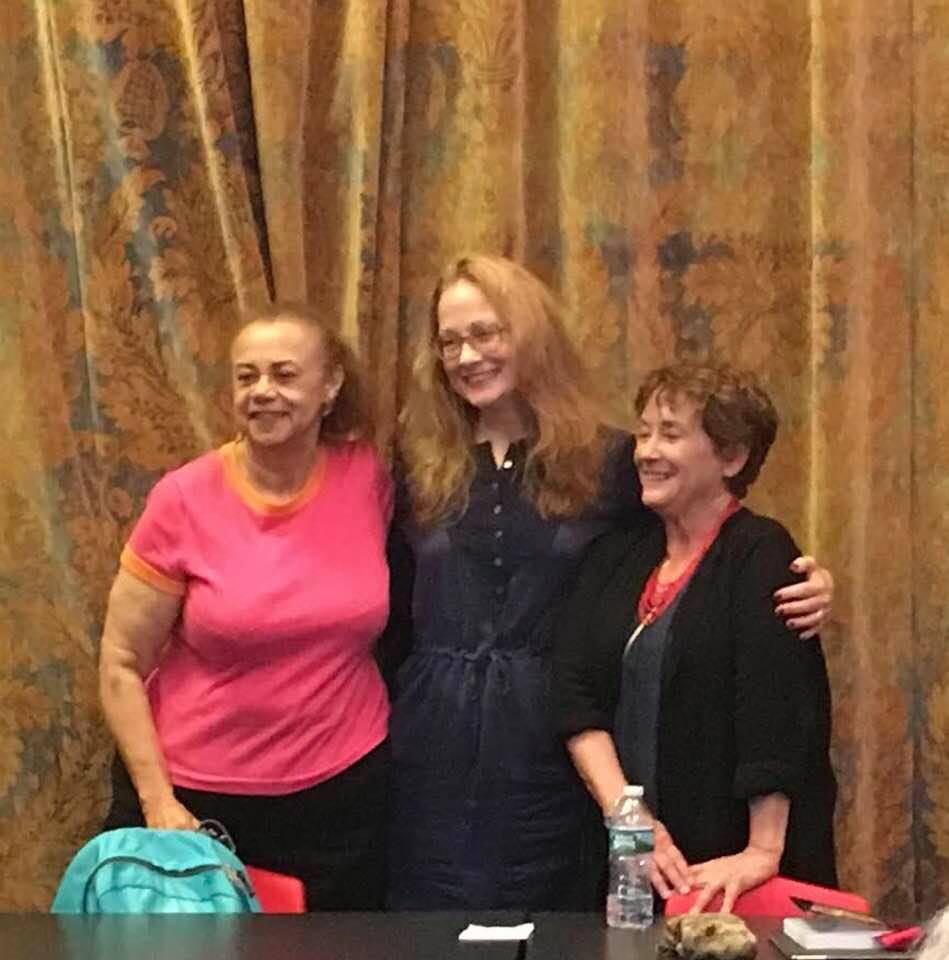
Linda Trice, Susan Wands, Jeanne Mackin

https://www.facebook.com/roughandreadynyc/